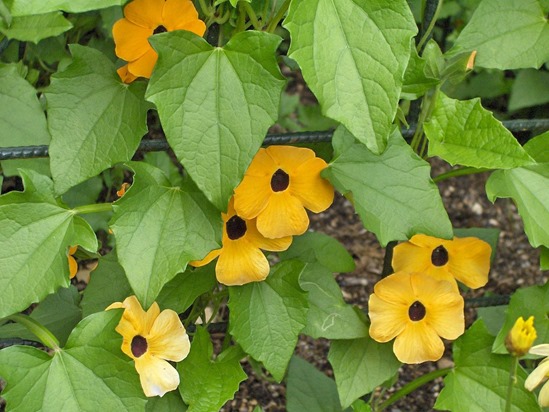Giving the Toads a Happy Home with Earth, Water and… Garden Furniture?
10.1 years ago guest post, pests, toads

There was a toad that lived in my mother’s garden, and I always considered myself lucky to happen to catch a glimpse of him by a rock before he hopped back into the dense flowers and vegetables. When the summer rain was fresh on the plants, little toad would always be hanging out by the edge of the garden. I always wondered what his home looked like, and why he lived in the garden instead of the wilderness. Now that I have my own garden, I wanted to see more of little toad and other amphibians. They truly are amazing animals, and it is such an honor to be able to provide a good habitat for them so I can sometimes look in on their life and wonder what it’s like to be a toad!
After a bit of research into what type of real estate really does it for amphibians, I found out I need to provide shelter, hibernation spots, and a breeding area. Implementing a few structures with earth, water and garden furniture will really give amphibians a nice place to settle down in. Here are some tips for making your own garden toad-friendly, whether it’s because you like the amphibians or just their positive effects on gardens.
Rocks
Toads love to hide under rocks, so scatter a few throughout the garden in piles and border any paths or boundaries. You can also use wooden logs for this. Either way, it adds some more design to your garden and comfort for the toads. Some toads will also hibernate underground, digging deep below the freezing line, but others will rely on cracks in wood or rocks because they aren’t as good at digging.
Interestingly enough, Scientific American maintains that many frogs will freeze to the point where their heart and lungs stop beating in the winter. The level of glucose in their vital organs acts as antifreeze and the heart and lungs will start working again once the temperature warms back up.
Ponds for mating, hydration, and hibernation
Even if you don’t have a pond, you may still get a happy toad to live in your garden as they are a dry-land equipped amphibian. If you want more variety such as frogs or salamanders though, install a pond to prove the adequate hydration and ecosystem they require.
Putting a small pond in or near your garden isn’t as hard as it sounds. I just dug a hole in the ground, covered it in strong plastic, and waited for the rain to fill it up. You can also fill it with water from the hose, but you will want to make sure the chlorine has fully evaporated by the time any amphibians come near it. If you pick an area of low ground where pools form naturally, the rain should be fine to fill it up.
A pond also provides a hibernation spot for aquatic frogs. They will partially bury themselves in the mud below the surface and take in oxygen from the water.
Make sure the pond is far enough away from chemically treated lawns, poisonous trees or other plants that pose a threat to amphibians and reptiles. Instead, proactively install plants that will proved shelter and attract the kind of insects amphibians enjoy.
Garden furniture for hiding
I really like the wild, overgrown look of vines twisting into everyday objects, so I decided to incorporate furniture into my garden to provide shade, depth of space, and a dense hiding spot for the amphibian residents of the garden. I found a really cool, intricate looking wrought iron bench and planted Black-eyed Susan vine transplants, weaving them through and around the bench. I like to think that the frogs, toads and salamanders love the natural looking fixture as a potential hiding spot.

I also added another bench to the front-most outer side of my garden, this time using a cute little wicker design with cushions for actual sitting. Depending on the season, I leave this piece of furniture protected with a garden bench cover for the most part, and wait for it to rain in the early evenings. Once the rain ceases I go out to the garden and quietly uncover the bench for some amphibian (and rainbow) viewing relaxation. It’s probably one of the best things ever!
Amphibians are magnificent creatures, but they’re not the only garden-beneficial animals. What is your favorite garden wildlife, and how do you attract them to your yard?


